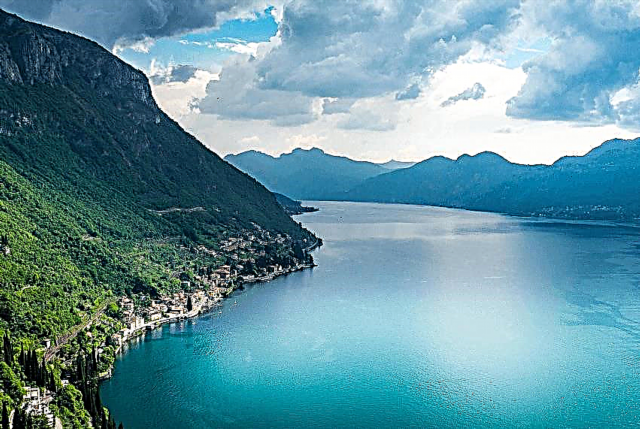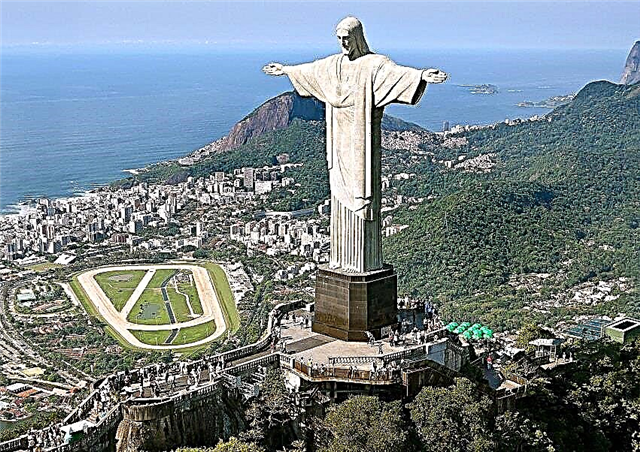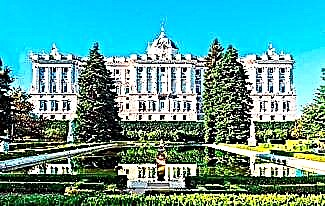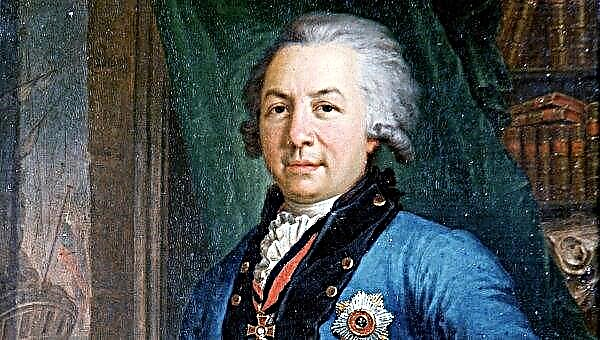For most travelers, vacation in Crimea is associated with excursions to the Ayu-Dag mountain, also well known as the Bear Mountain. It is not only a unique natural formation, but also a valuable repository of ancient archaeological artifacts. Its name consists of two Crimean Tatar words of Turkic origin.
Where is Mount Ayu-Dag
The mountain formation Ayu-Dag is considered the pride of the southern coast of Crimea. The mountain is surrounded by Big Alushta and Big Yalta, the villages of Gurzuf and Partenit. In the Yalta direction, the mountain is adjacent to the famous camp "Artek", for which for many years it has been an important symbol.
Ayu-Dag is 570.8 m high. The area is 4 km in size. About 2.5 km of the surface of this hill are located in the Black Sea. The photos show that Bear Mountain is clearly visible from various points of the Black Sea coast.
The mountain got its name due to the shape resembling a lying bear. At the same time, the "head" of an imaginary animal is completely immersed in sea waters, and the "sides" are overgrown with dense forest.
How Bear Mountain was formed
Researchers claim that the mountain was formed about 150 million years ago. This period falls on the middle of the Jurassic period. The reason for the rise was the molten magma that came out to the surface of the earth, in connection with which Ayu-Dag is considered a unique mountain. From above, the rock formation is covered with sand and clay.
In connection with the peculiarities of the formation and composition of the Bear Mountain, it is customary to consider it as a "failed" volcano - laccolith. Today Ayu-Dag has the status of the largest open-air natural museum located on the South Coast.
What is rich in the hill
Ayu-Dag is not like other uplands of the Crimea, built mainly of limestone. The mountain consists of igneous rocks (gabbro-diabase, hornfels, diabase). Its bowels abound in a variety of natural resources. The highland contains:
- pyrite;
- tourmaline;
- porphyrite;
- vesuvian;
- amethyst.

In total, there are about 18 varieties of such minerals. The stone, which makes up most of the mountain, has a pleasant grayish-greenish tint to the eyes, which acquires special beauty in the process of polishing. It is interesting to know that stands on Red Square are made of gabbro-diabase. Also, the canals of the Moscow River are lined with it and the old stations of the Moscow metro are decorated with it.
Local flora and fauna are no less diverse. It is home to many foxes, hedgehogs, badgers, squirrels, martens, lizards, snakes, woodpeckers, owls and other animals. A description of about 44 species of plants of the Ayu-Dag mountain can be found on the pages of the Red Book. A considerable number of hornbeams, oaks, junipers, and jasmine grow on the mountain. Already in February, glades of snowdrops appear on the "back" of the stone "bear".
The old resident of these places is considered to be rock oak (some trees are at least 800 years old, and the diameter of the trunks can reach 1.5 m). Another long-lived tree also grows here - the dull-leaved pistachio, called the turpentine or incense tree.
Historical background
On the territory of the Bear Mountain, numerous historical monuments are found, represented by the ruins of pagan sanctuaries, ancient flint tools, burial places of the first Christians, the remains of medieval buildings. Thanks to such finds, Bear Mountain is considered a valuable object for history researchers.
In the VIII-XV centuries. on the mountain there were numerous settlements, a Christian monastery functioned. According to the generally accepted version, people left the hill with the arrival of 1423. This period was marked by a large earthquake, which led to the gradual dehydration of the area.
In the old days, Mount Ayu-Dag had another name - Buyuk-Kastel (translated as "big fortress"). Until now, at its top, the ruins of an ancient fortification built by the Taurus have been preserved.
How to get to the mountain
It is convenient to get to the Bear Mountain both from the Alushta and Yalta directions. In the first case, you need to get off in the village of Lavrovy. If vacationers are coming from Yalta, the “Cemetery” stop following Gurzuf will be convenient. In this case, you can get by bus # 110 (route "Yalta-Partenit"). The trip from the city to the mountain takes about 30 minutes on average. It is convenient to move up the mountain from the turn to "Artek" - from here an asphalt road leads to the famous Crimean landmark.
We advise you to look at Mount Ai-Petri.
The most inexpensive way to get to the territory of the famous mountain is to travel by trolleybus # 52 from Yalta. After exiting the transport, you will need to walk about 800 m in the direction of the turn.
Climbing to the top
Information on how to climb the legendary Crimean mountain will be useful. The entrance to the ascent trail is located near the Krym sanatorium. Walking to the top is carried out on a paid basis. The ascent to Bear Mountain is steep enough, and will not be an easy walk. At a moderate pace, the entire promotion process takes about 3 hours. Throughout the tourist trail, you can find a wide variety of barbecue, cafes, but for the sake of practicality, tourists are advised to take small supplies of water and food with them.
In many places of the trail you can stop to enjoy the beautiful views of Partenit and its bay, Cape Plaka. Further, the path becomes flatter, and it is already possible to move along it much more confidently. In several places, travelers will have to walk along the edge of the cliff. From here you can clearly see how the sea waves break on the rocks below. Such a spectacle will be exciting for all thrill-seekers.
A little bit of romance in conclusion
Mount Ayu-Dag is covered with a lot of legends. One of them says: in ancient times, only animals lived on the coast of Crimea, among which large bears predominated. Somehow the waves washed ashore a small bundle, in which there was a baby - a little girl. The bear leader left her in his pack, and decided to raise her as his own child. The baby grew up surrounded by love and care, and became a real beauty.
One day, while walking by the sea, she noticed a boat at the edge of the water. Approaching, the girl found a weakened youth in her. It turned out that the young man escaped from the enslavers and wants to become free. The girl hid him from bear eyes, and secretly began nursing him. Soon tender feelings flared up between the young people. They built a boat on their own and decided to leave the kingdom of bears together.
Seeing that their favorite swims away, the animals flew into a rage. Not daring to set off in pursuit, the bears decided to drink sea water. When the sea became shallow, the boat began to approach the shore. The girl begged for mercy, and then she began to sing beautiful songs. The animals softened, broke away from the water, and only the leader did not stop drinking from the sea. He lay for a long time, looking into the distance at the receding boat with the lovers, until his body turned to stone, his fur became an impenetrable forest, and his back became the top of the mountain, now known as Ayu-Dag.









